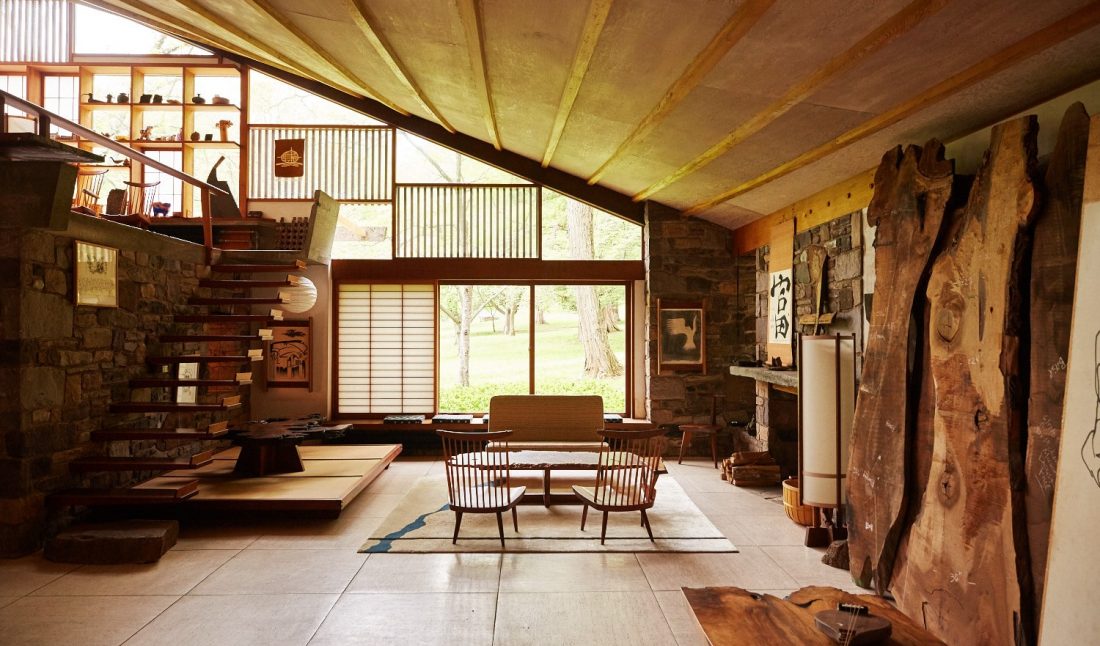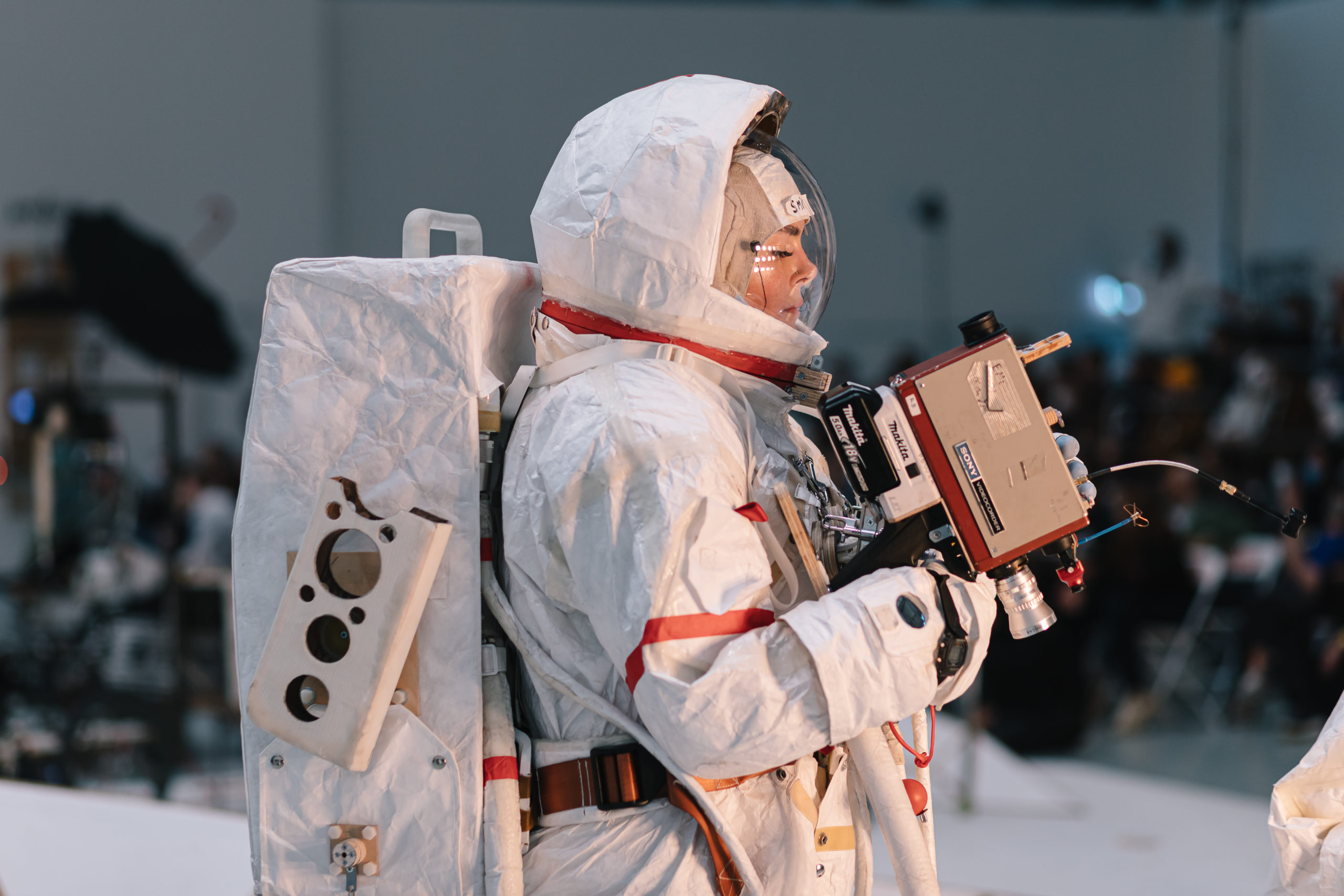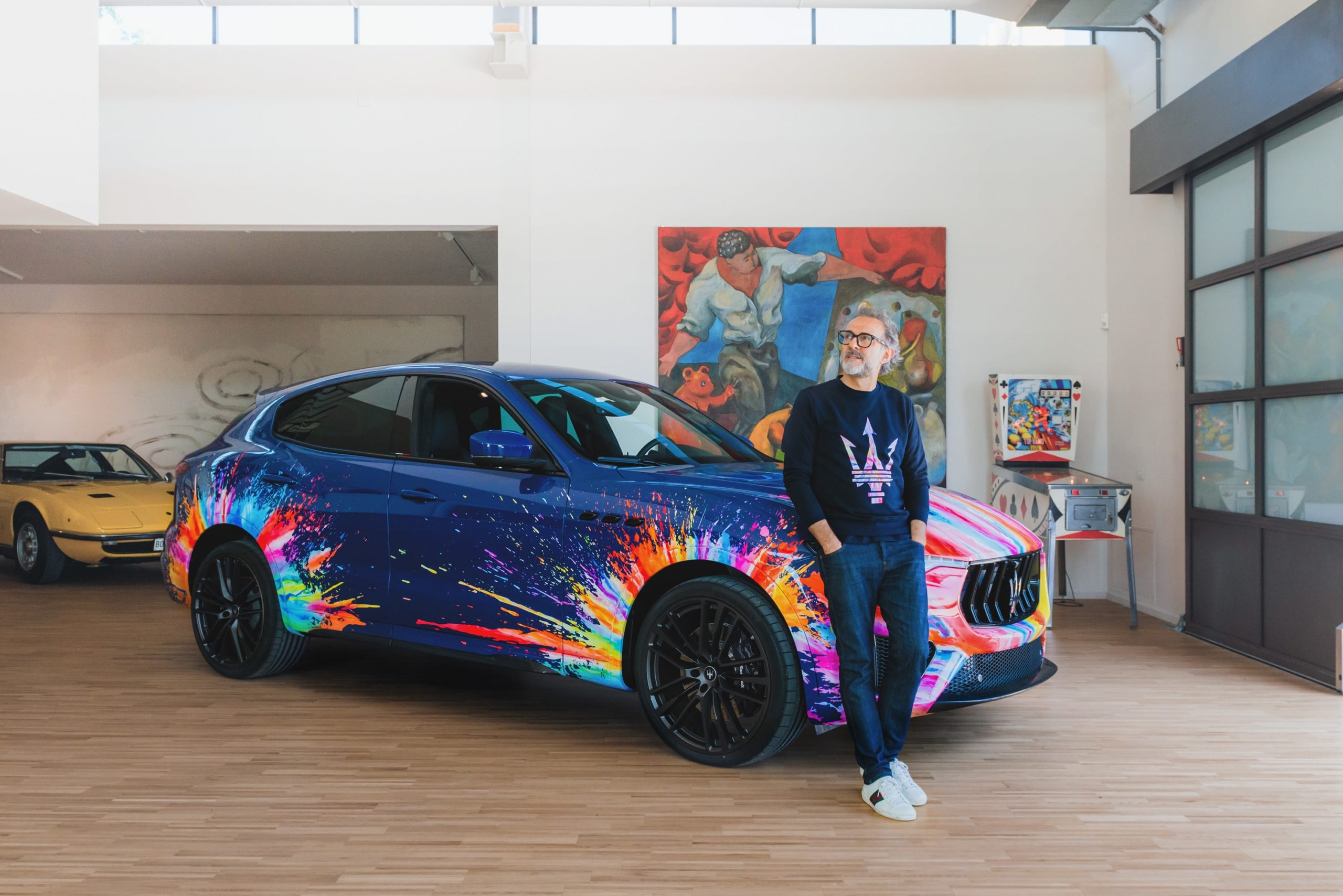George Nakashima (1905–1990) had a deep respect for natural materials, combined with many learned skills, that developed into a globally coveted design aesthetic. Yet it’s a myth that the architect and woodworker did it all alone, his daughter, Mira Nakashima, recently told Whitewall. In fact, many people played a role in shaping her father’s legacy, including artists like Morris Graves, architects like Antonin Raymond, carpenters like Gentaro Hikogawa, ministers like Leopold Tibesar, and even some craftspeople who still work with the family’s studio today.
Since her father’s passing over 30 years ago, Mira has led the studio, bringing in modern technology, a heightened focus on sustainability, and more women to the shop than ever before. The Nakashima atelier remains abuzz with collaboration, connection, and a combination of old- and new-world productivity. While traditional materials and designs are still handled how George ensured that they would be, some drawings are now done on computers, new nontoxic oils are used in production, and communication throughout the current two-year wait time is facilitated via iPhone and email.
From the Nakashima home and studio in New Hope, Pennsylvania, Mira spoke with Whitewall about designing furniture with the past and present in mind, and what the future of the family-owned studio may hold.
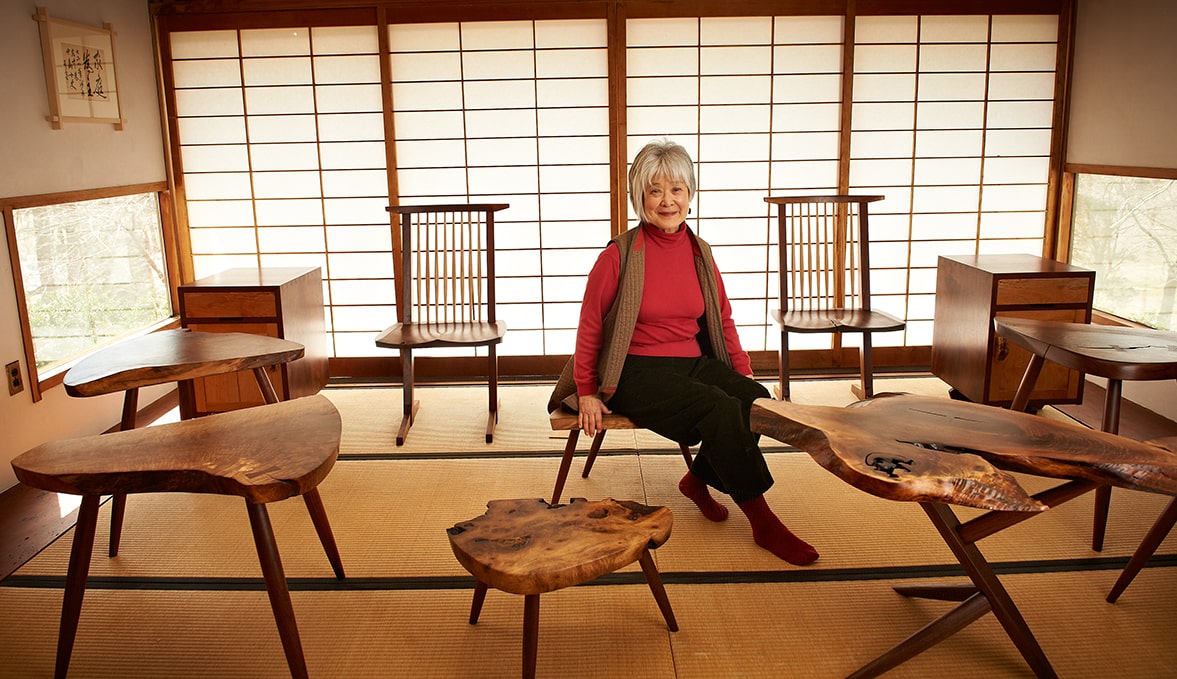 Mira Nakashima, courtesy of George Nakashima Woodworkers, S.A., New Hope, PA.
Mira Nakashima, courtesy of George Nakashima Woodworkers, S.A., New Hope, PA.
WHITEWALL: How did the transfer of your father’s profession from architect to furniture-maker happen?
MIRA NAKASHIMA: It happened before the internment camp. He met my mother in Tokyo in 1939, got engaged in 1940, and married in Los Angeles in ’41. Before they were married, my father went back to Japan, and saw a Frank Lloyd Wright building under construction and said that if that was the way to do architecture, he wasn’t going to be an architect. That’s when he decided to do furniture.
Then, they got married and moved to Seattle, and my father met Father Leopold Tibesar, who was ministering to the Japanese American community in Seattle, and they made an arrangement. He had a boy’s club for the community, and he had agreed to purchase machinery for it if my dad would teach them how to do woodworking. So he taught them how to woodwork in exchange for using the workshop, and that’s where he first started furniture.
His designs were simple back then, linear and architectural, utilizing regular kinds of lumber he could afford. A year later, we were put in the camp—the Minidoka War Relocation Center in Idaho. I was only six weeks old, so I don’t remember anything, but for those who were old enough to remember, it was traumatic. Thankfully, Dad was great friends with the artist Morris Graves, who kept our stuff when we were there and returned everything to us.
In camp, Dad was so happy to have found this carpenter named Gentaro Hikogawa, who had been trained in Japan and was a master carpenter. The authorities decided they should work together and make things as examples for others to make for themselves to make our living quarters more livable.
WW: How did the New Hope home and studio grow from there?
MN: Antonin Raymond, who was the architect in Tokyo that my dad worked for in the 1930s, invited us to come to New Hope. After a period of time, Dad went out on his own and he met, through Mr. Raymond, Hans Knoll, and he did some work for his studio in the early days. We were renting a house then, and Dad found the property where we are now, and he purchased it by barter. He didn’t have enough money to purchase three acres, so he worked for the farmer on his farm in exchange for the price. Then he started building.
The first buildings were very primitive and inexpensively built because that’s all he could do. He built the shop and the house, and that’s where I grew up. When I went to college, Dad suggested I major in architecture, and then he gave me a trip to Japan after I graduated. I studied architecture there as well, with one of my father’s colleagues from the Raymond office, and I married one of my classmates. We moved to Pittsburgh and lived there for a while before Dad said he bought more land and would build me a house if I came home.
I came home and started working part time. I was allowed to work in the shop then, too, so I worked on small projects. I learned mostly through the men there, rather than only directly from my father. Then, in 1990 when he passed away, I had to take over all of the design duties. By that time, I had worked about 20 years with Dad.
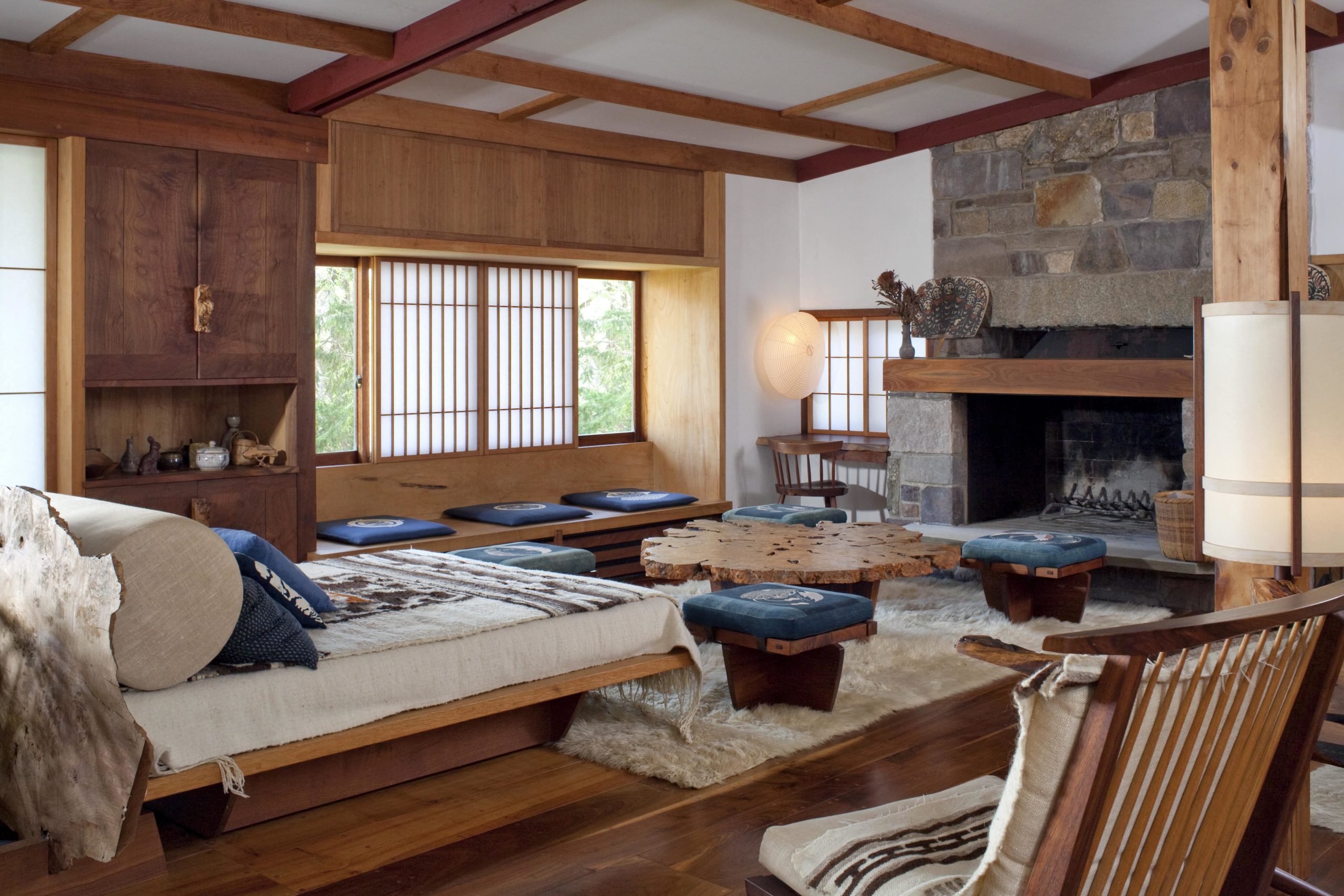 Reception House, courtesy of George Nakashima Woodworkers, S.A., New Hope, PA.
Reception House, courtesy of George Nakashima Woodworkers, S.A., New Hope, PA.
WW: What were some of your father’s foundational philosophies that still guide the studio?
MN: I think that was what he learned in India while working with Raymond’s office. He was sent to India to work on its first reinforced concrete building and learned the philosophy of Sri Aurobindo, integral yoga—meaning you integrate your life with your work, you don’t keep it separate.
He couldn’t afford good wood in the beginning, so he used the cast-offs from the lumber industry and decided to capitalize on the flaws—the
knots and the cracks—and make them a part of the design aesthetic. I think he learned that bit in camp. He started out with very little money and machinery and made do with what he had. I think he subconsciously embraced the Japanese aesthetic of wabi-sabi and being non-extravagant and respectful of nature. He respected the forms of the tree so much that that became the way he designed the way he did, rather than trying to impose a man-made design on an innate material.
WW: What might the future of the studio look like? Will your children lead the business?
MN: This is a very good question because we’ve been trying to figure out what will happen. It’s really hopeful that, if not leaders on site, there will be oversight by family members. And we probably will have a board of non-family members.
When Dad passed away, the press created this myth that he did everything with his own two hands. We need to avoid that from happening again, and have people recognize the workers and the designers, so that it’s not the end of the world if I’m not around to design furniture. That’s a plan we haven’t quite figured out yet, but it’s in the works.
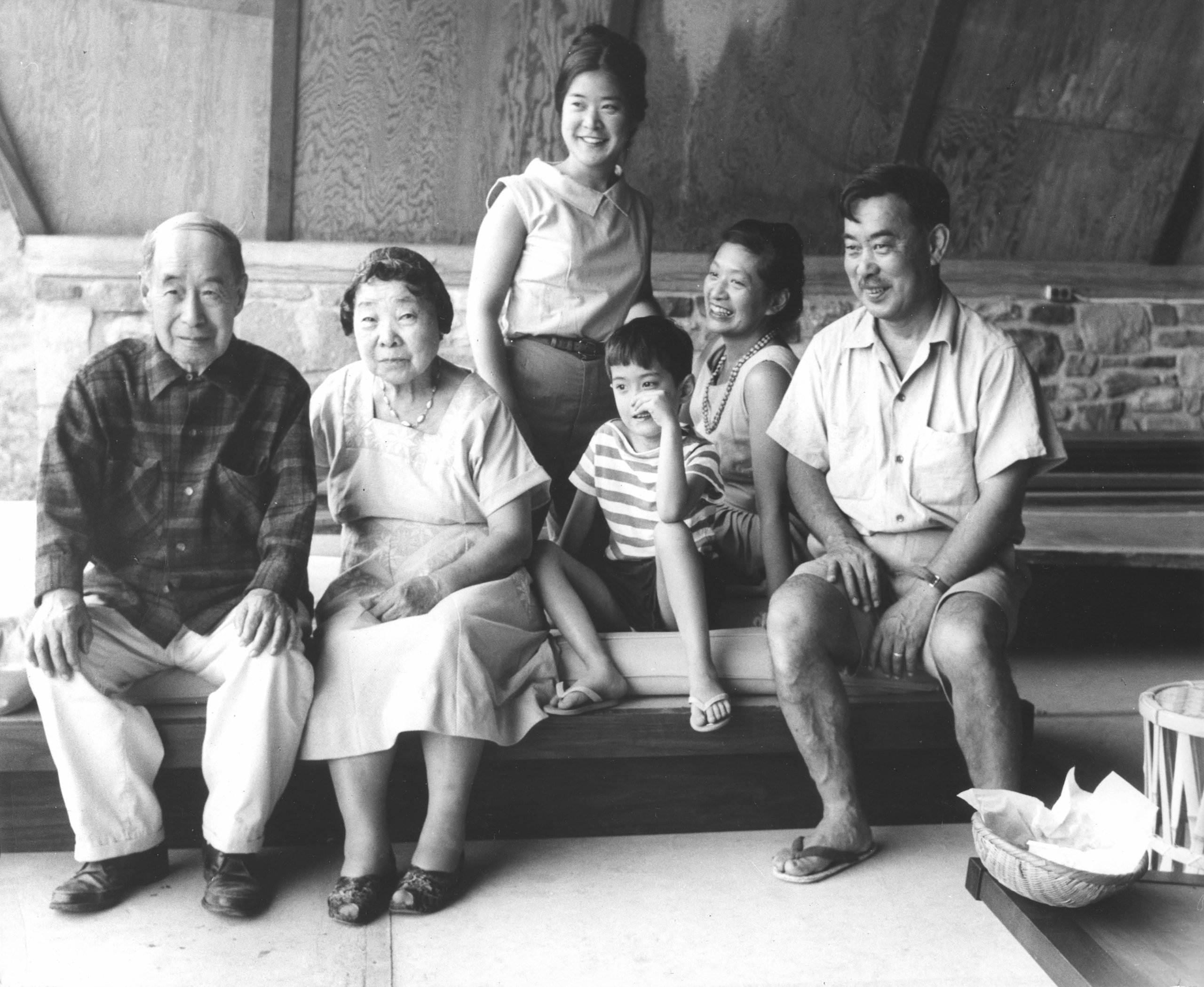 Nakashima family, courtesy of George Nakashima Woodworkers.
Nakashima family, courtesy of George Nakashima Woodworkers.
WW: What are the conversations around sustainability like at the shop?
MN: From the beginning, Dad used wood that nobody wanted, and we continue to do that. Our main source is from an arborist about 20 minutes away who takes down trees. Sometimes they have outgrown where they live, are leaning over a house, or have come down in a storm. He’s got a pretty good idea of what we need, so he’ll harvest those trees and select the best ones for us. When we need lumber, we go and look through his woodpile. That is totally sustainable.
And we waste as little as possible. Sometimes wood is cracked during the drying process and we have to discard parts or make a big plank into something smaller because it’s not holding together. But from the very beginning, Dad utilized the butterfly joint to keep the planks together when they started to crack. Sometimes we cut them down the middle and glue them back together if the crack is hopeless, but we try to preserve and use as much of the wood that we have, with all its flaws and difficulties as much as possible, without wasting it.
WW: Do you have a favorite piece of furniture?
MN: My music stand. It was a gift by my father to my husband and I when we got married. I use it a lot, and I love it a lot.
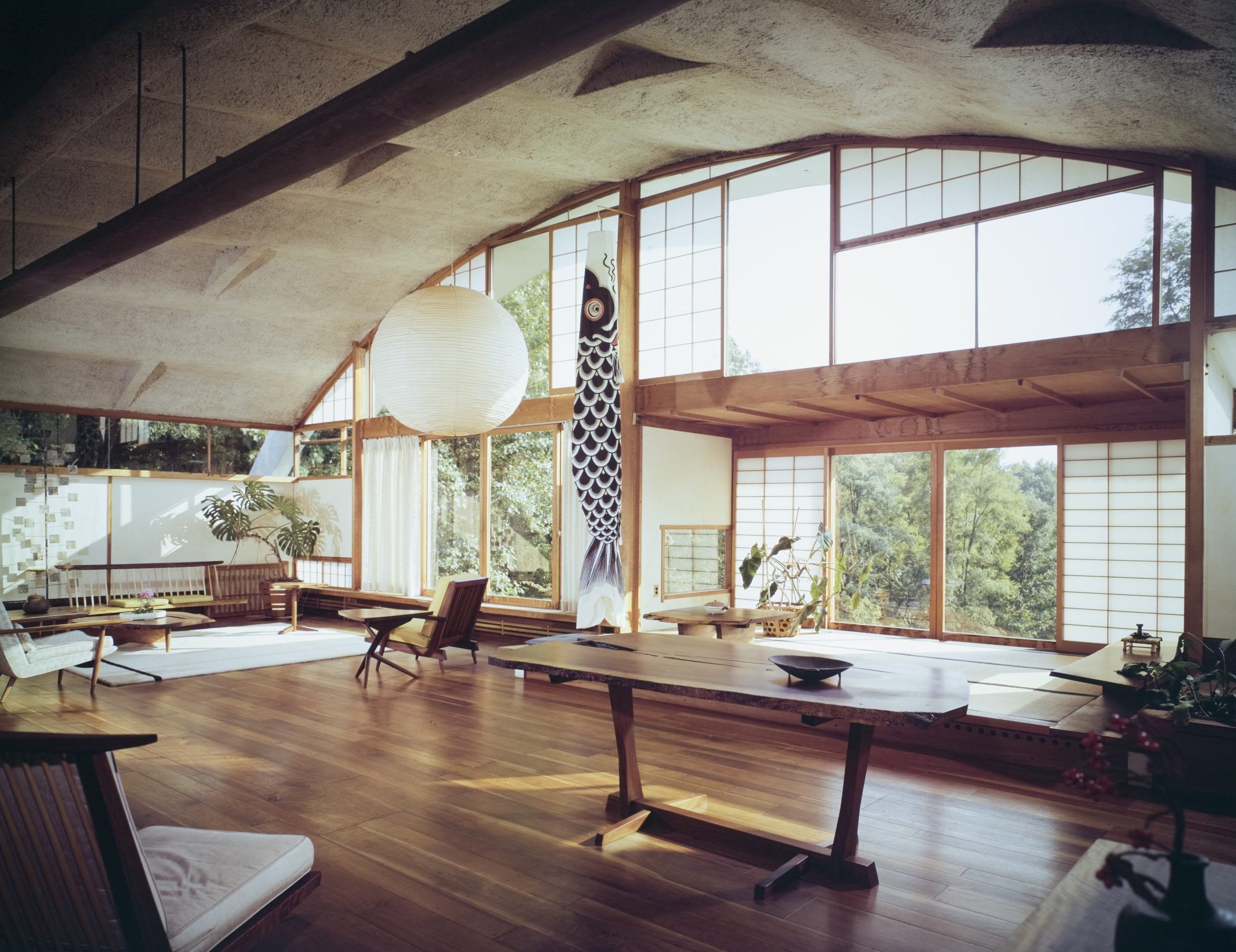 Conoid Studio, courtesy of George Nakashima Woodworkers, S.A., New Hope, PA.
Conoid Studio, courtesy of George Nakashima Woodworkers, S.A., New Hope, PA.






